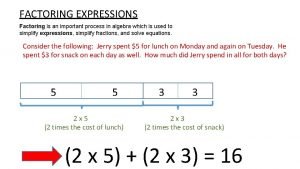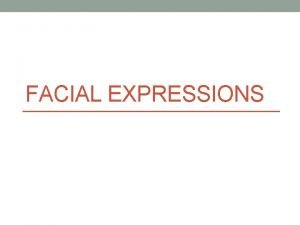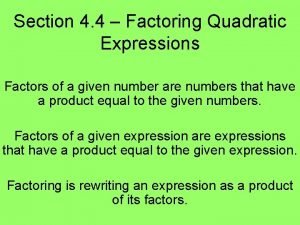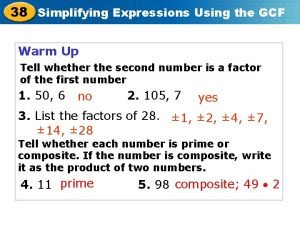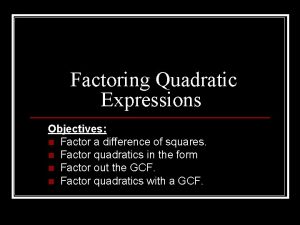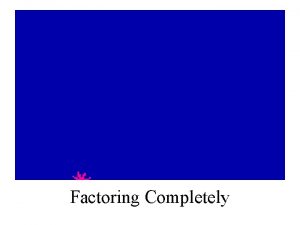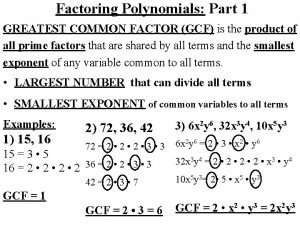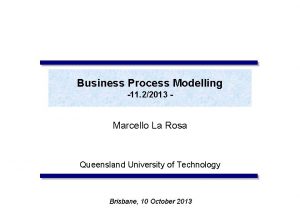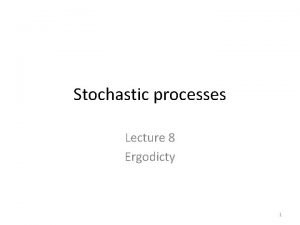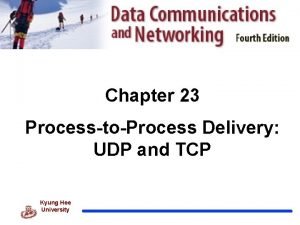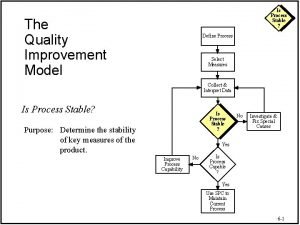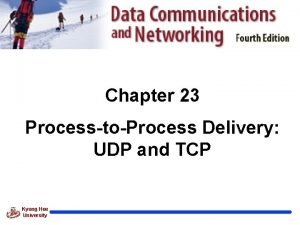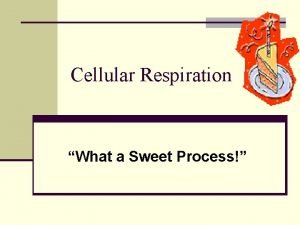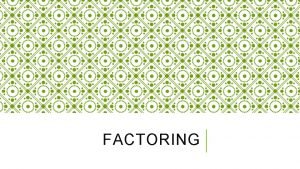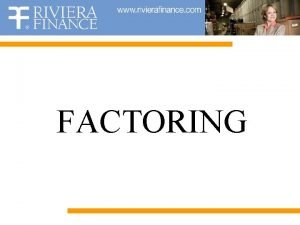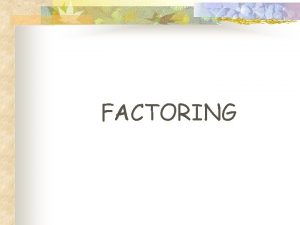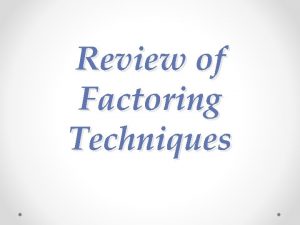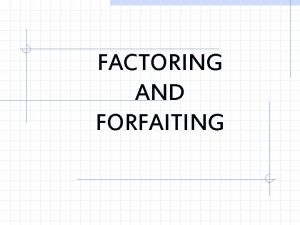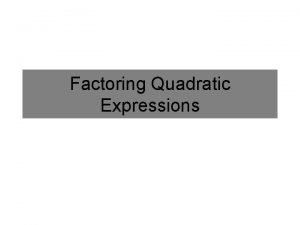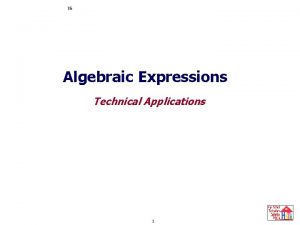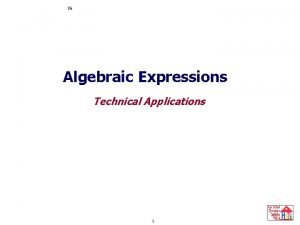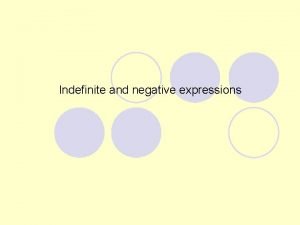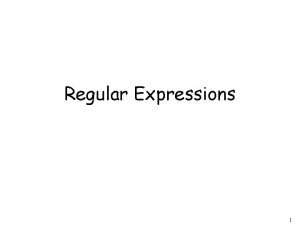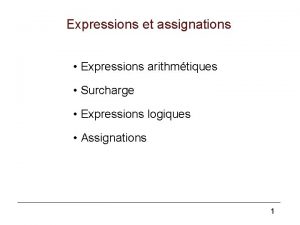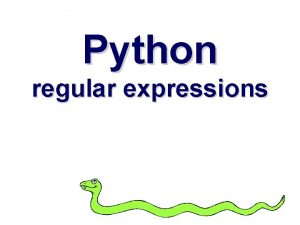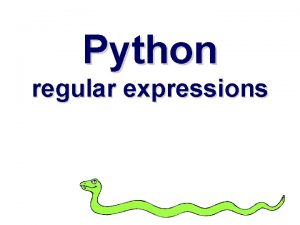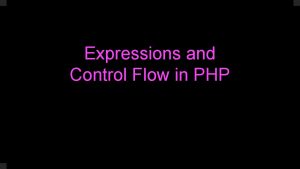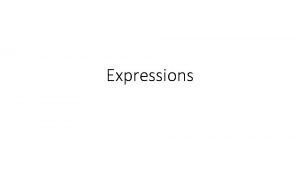FACTORING EXPRESSIONS Factoring is an important process in





















- Slides: 21

FACTORING EXPRESSIONS Factoring is an important process in algebra which is used to simplify expressions, simplify fractions, and solve equations. Consider the following: Jerry spent $5 for lunch on Monday and again on Tuesday. He spent $3 for snack on each day as well. How much did Jerry spend in all for both days? 5 5 2 x 5 (2 times the cost of lunch) 3 3 2 x 3 (2 times the cost of snack) (2 x 5) + (2 x 3) = 16

Consider the following: Jerry spent $5 for lunch on Monday and again on Tuesday. He spent $3 for snack on each day as well. How much did Jerry spend in all for both days? Does the model shown below represent the situation as well? 5 3 5+3 (cost of lunch and snack on Monday) 5 3 5+3 (cost of lunch and snack on Tuesday) 2 x (5+ 3) = 16

We can look at both expressions to see that they are equivalent. (2 x 5) + (2 x 3) = 2 x (5+ 3) Here’s another view… Let = $1 for lunch Let = $1 for snack

Mathematically, this equation shows an expression that has been “factored. ” (2 x 5) + (2 x 3) = 2 x (5+ 3) GCF times THE OTHER SUM There is a shared factor (GCF) of 2. Take it out and multiply it to the remaining sum. PRACTICE: (5 x 3) + (5 x 4) = ___ x ( __ + __)

WRITE AN EXPRESSION REPRESENTING THE TOTAL. a a _____ b b _____ The expression that represents the total is ______

Can you rearrange the parts of this bar to represent the total in another way? a b Now write a new expression to represent the same total.

The Distributive Property

Use the GCF and the Distributive Property to write equivalent expressions. “Factor. ” 3 g + 3 f = ________ 6 x + 9 y = ________ 3 c + 12 c = ________ 24 b + 8 = _________


Are these expressions equal? How do you know? 6 x + 21 y and 3(2 x + 7 y)

Evaluate each expression to prove that these two expressions are equivalent. Let g = 6 5 g + 7 g g(5 + 7)

Evaluate each expression to prove that these two expressions are equivalent. Let x = 10 14 x + 2 2(7 x + 1)

Fill in the blanks with the numbers that will make the equation true. 4 x + 12 y = ___ (x + 3 y) 35 x + ___y = 5 (7 x + 10 y) ___x + 9 y = 9 (2 x + y) 32 x + 8 y = 8 (___x + y)

Use models to prove that 3(a + b) = 3 a + 3 b

Use the GCF and the Distributive Property to write equivalent expressions in factored form. 4 d + 12 e 18 x + 30 y 21 a + 28 y

Distributing Expressions The expression 2(a + b) tells us that we have 2 of the (a + b)’s. Create a tape diagram representing 2 groups of (a + b). a b

Show your model would look if we grouped together the a’s and then grouped together the b’s. a a b b What expression can we write to represent the new diagram?

Using Area Models to Help Distribute 2 (x + y) x 2 y

Using Area Models to Help Distribute 2 (3 x + 4 y) 3 x 2 4 y

Using Area Models to Help Distribute y (4 x + 5) 4 x y 5

Using Area Models to Help Distribute 3 (7 d + 4 e) 7 d 3 4 e
 Factoring is an important process
Factoring is an important process Mouth morphemes in asl
Mouth morphemes in asl 4-4 factoring quadratic expressions
4-4 factoring quadratic expressions Factor the simplified expression using the gcf.
Factor the simplified expression using the gcf. Gcf of 2 and 4
Gcf of 2 and 4 Factoring polynomials gcf and quadratic expressions
Factoring polynomials gcf and quadratic expressions Gcf factoring
Gcf factoring From most important to least important in writing
From most important to least important in writing From most important to least important in writing
From most important to least important in writing Least important to most important
Least important to most important Factoring by gcf
Factoring by gcf In cement hardening process instants are very important
In cement hardening process instants are very important Classifying polynomials
Classifying polynomials Os coxae
Os coxae Substantive vs procedural due process
Substantive vs procedural due process Business process levels
Business process levels Ergodic process in random process
Ergodic process in random process What is process to process delivery
What is process to process delivery Condylar and coronoid process of mandible
Condylar and coronoid process of mandible Stable process has to be a capable process
Stable process has to be a capable process Process-to-process delivery
Process-to-process delivery Sweet process vs process street
Sweet process vs process street
